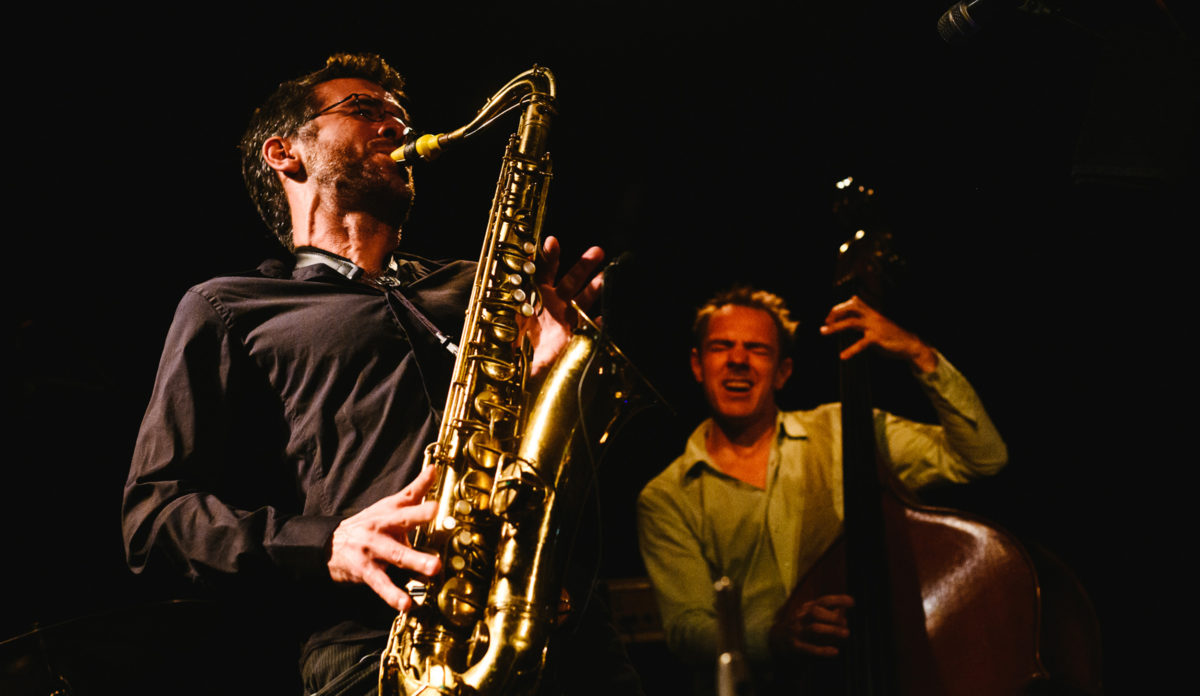Is it still relevant to talk about a french jazz scene ? #1
- Par Mathieu Feyrin
 © Paul Bourdrel
© Paul BourdrelJournalists, researchers and professionals are invited to give their vision on the french jazz scene.
↓↓
The stage covers a series of dynamics around its venues that we experience at different times in our lives. It allows us to geographically situate artistic action on a given territory and the development of more globalized aesthetic networks.
Doctorant à l’Université d’Avignon, Mathieu Feryn travaille au sein de l’équipe Culture et Communication du Centre Norbert Elias (EHESS — CNRS — UAPV – AMU). Il appréhende le jazz de manière originale en s’intéressant aux récompenses décernées dans le marché de la musique depuis les années 2000 pour appréhender la reconnaissance des musicien. ne. s de jazz français. Né à Angers, il a collaboré avec des artistes internationaux, produit des festivals de jazz dans trois régions françaises (Pays de la Loire, PACA, Ile de France), des émissions radio et collaboré dans des médias spécialisés (France Culture Plus, Citizen Jazz, Radio Campus).
To question the relevance of the stage is therefore to approach these dynamics on a local, national and international level.It also means approaching its polysemic meaning, when we evoke the stage, we can designate on the one hand the physical space where our experience takes place and on the other hand the geographical space where all our tangible experiences are made around these spaces of diffusion, or both. The stage is thus a plural configuration where we rub shoulders with different actors within networks more or less extended in time and space invested by our activities. By participating in Résonnance, we situate for example our practices at the Sainte Blandine church, at the Périscope bar, at the Jazz festival in Vienne and probably we will be able to witness other similar or distant experiences linked to this jazz action. And precisely, what do we then refer to when we invoke a “jazz scene”?
Let’s take for example the Schnellertollermeier trio or Joachim Florent. The trio invokes raw rock, minimal music in its compositions, while the double bass player proposes a radical style nourished by jazz and classical music. What happens then?
At the same time, here and there, jazz seems to be an opportunity for the different actors to anchor a series of encounters and to exchange a series of values.
At the same time, here and there, jazz seems to be an opportunity for the different actors to anchor a series of encounters and to exchange a series of values. Encounters with the music, the musicians, the organizers, the person who is standing next to you right now or the person who was next to you the moment you decided to park. In this, jazz would be a collective experience, associating you and us. So it’s a pleasure to meet you, dear reader. When we evoke jazz, finally we would refer to this series of encounters, fruitful or not, to the development of our artistic and cultural practices. It would represent part of the historical dynamics, located in the different spaces related to our listening, our outings and the sharing of our musical tastes, for example. It is also a way to talk about a shorter process, more related to our human and contemporary conditions. It thus contributes to make the link between an interior, domestic and sensitive with an exterior, situated and shared collectively. As soon as the interior and the exterior try to regulate themselves, a regime of values operates. In this context, we can ask ourselves the question of placing this experience at the “French” level.
To do so, I invite you to meet the Swiss musicians of the Schnellertollermeier trio or the rest of the guests invited by the organizers of the Résonnance festival. You may then be surprised to find local, national and more internationalized anchors linked to the development of their musical practices. Then do the exercise with yourself and with some of the actors of the place where you find yourself, you will also notice multiple dynamics. It is therefore by evoking the series of events that contribute to making this link or not with our experience in the time and space invested that we can understand how and with whom the cultural scenes of yesterday, today and tomorrow are made. Scenes conducive to travel, sharing and moments of symbiosis within this collective practice. It is then incumbent on us to understand how and with whom these multilocated and multivariate experiences are made.